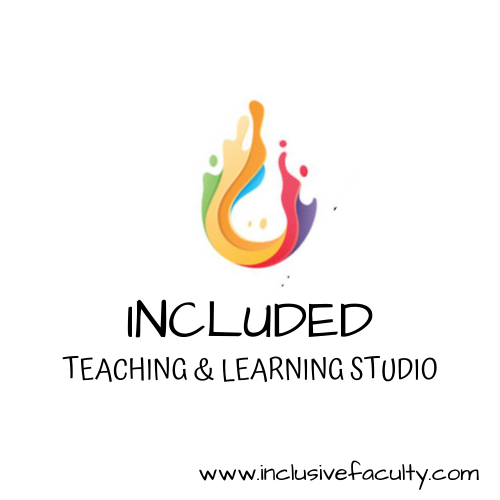Helping faculty develop strategies for increasing access and inclusion in Higher Ed classrooms.
Making Connections: Sara Schley, director of NTID’s Research Center for Teaching and Learning, is using a National Science Foundation grant to connect faculty and student mentors with the goal of improving pedagogy.
Faculty: Pedagogy Matters
Faculty have a hard job: Balancing teaching, research and scholarship, and service, plus whatever life requires outside of work. The teaching part of the job can be particularly difficult. Beyond the required prep time, classroom time can be challenging - especially since college and university classrooms today are more diverse than ever. Few faculty receive much training about how to be an effective classroom teacher during their graduate training.
Disability Services Offices ensure that institutions comply with federal and state laws re. access to education (e.g., ADA, Section 504 of the Rehab Law, etc.). Teaching and Learning Centers help faculty develop use of campus digital and classroom technologies and services (e.g., course management software, online learning, classroom technology). We help faculty teach more inclusively: What they do in classroom spaces (face-to-face, online, blended). With changing student demographics, we help faculty teach effectively and inclusively to respond to classroom diversity.
Colleges and Universities: Pedagogy Matters
We help faculty make the classroom experience easier and better for all, by collaborating with you to develop access and inclusion strategies that solve specific challenges in your courses.
What kind of classroom challenges? Consider:
Disabilities
The start of the semester comes with emails detailing mandated access and accommodations for registered students with disabilities. These accommodations only go so far, and while they give access to classroom information and learning (literally, can students "get to" the information, can they process it?), they do not ensure inclusion in the educational experience (are they on the sidelines, or full participants?). Plus, there are so many! And strategies are different depending on who shows up in your classroom (physical disabilities, social/interaction disabilities, processing/attention disabilities, sensory disabilities, etc.).
Non-Native English Speaking Students
Active learning and collaboration in the classroom can be challenging when you have students with different levels of language proficiency. How do you group students with different communication skills and preferences? How do you manage student complaints (e.g., "I did all the writing on this project because my partner doesn't speak English very well"). Pedagogical strategies can make this easier for you and the students, as well as a better experience.
Other Challenges.
Have you ever been flummoxed about how to work with varying gender identities in the classroom? Or sexual orientation, with varying levels of being "out"? With having a single black student, or one Muslim woman student, or one student with right wing politics in the class? My expertise started with extensive understanding of non-native English use of English, deafness, and physical disabilities. There are numerous intersectionalities across many areas of otherness. I work with faculty to develop classroom practices and make the experience better for all.
First-Generation College Students
While different colleges and universities may define who counts as a "first generation" student differently, what is not different is that as a group, these students enroll and graduate at lower rates compared to other students. Regardless of how your institution identifies or counts them, there are strategies you can use to improve classroom principles and practices with diverse audiences.
This is where we come in: We work with faculty to learn and implement successful strategies for making the student experience better - with disabilities in the classroom, with students who have other communication needs, with under-prepared students, with other specific classroom challenges.
I thought Access and Inclusion were the same thing. They're different??
If you think that someone is included once they have access to information or physical space, you are not alone! Here's more information.
Strategies? What are those?
Good question! Read about some examples here.
Diversity includes disability?
Most are familiar with the term "diversity" referring to things like racial and ethnic diversity, or things like socio-economic status or religious backgrounds. Disabilities are instead lumped with a category "of special needs". From perspectives of inclusion, equity, and social justice, disability status is simply another dimension of diversity.

